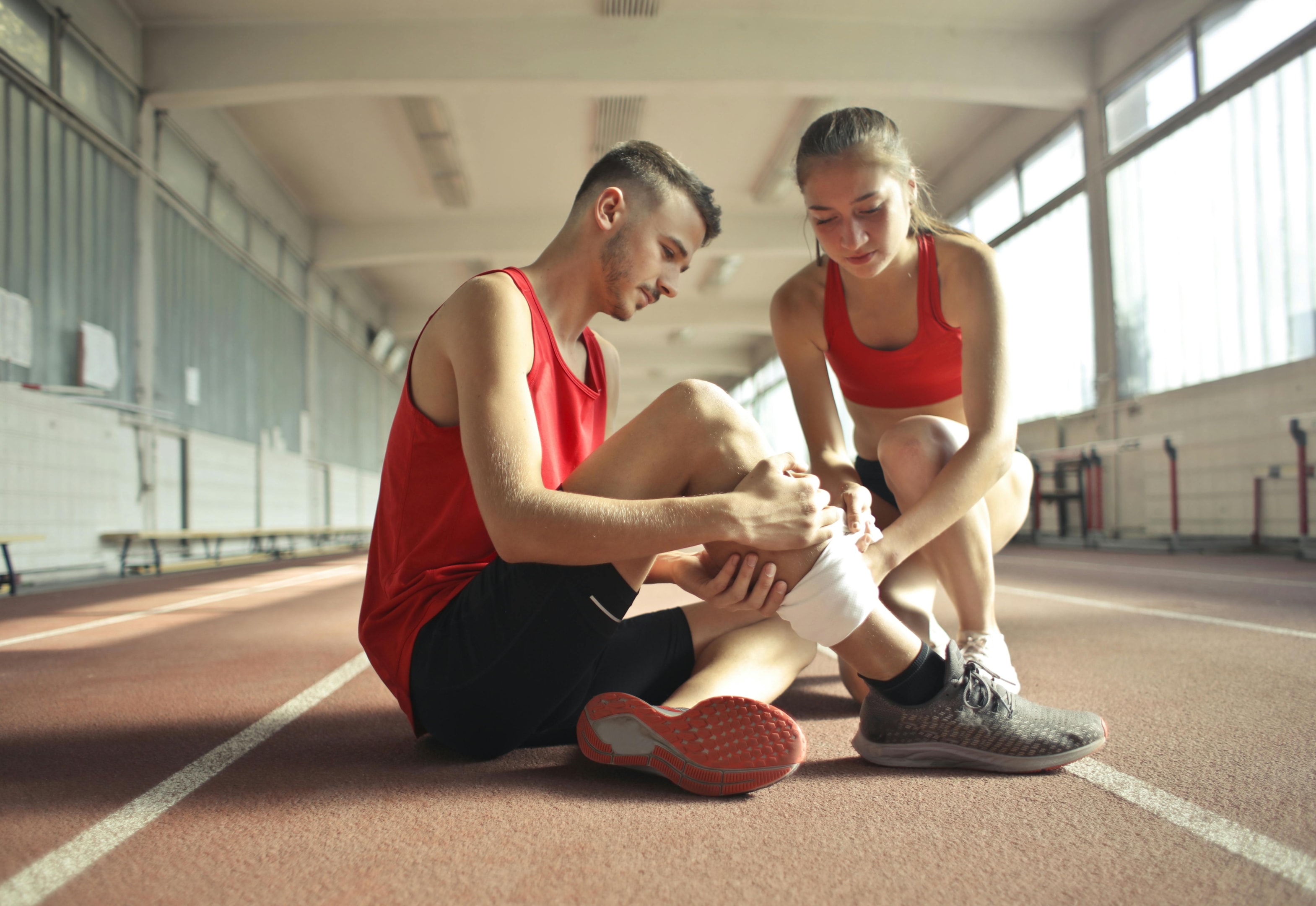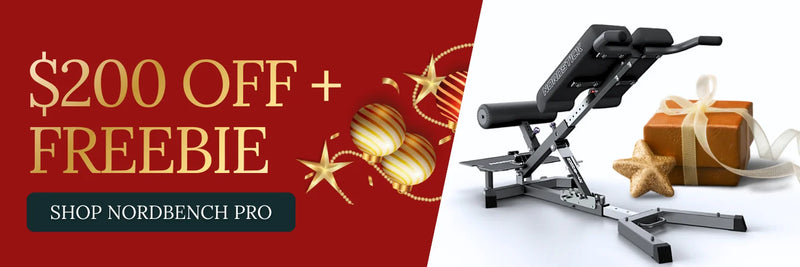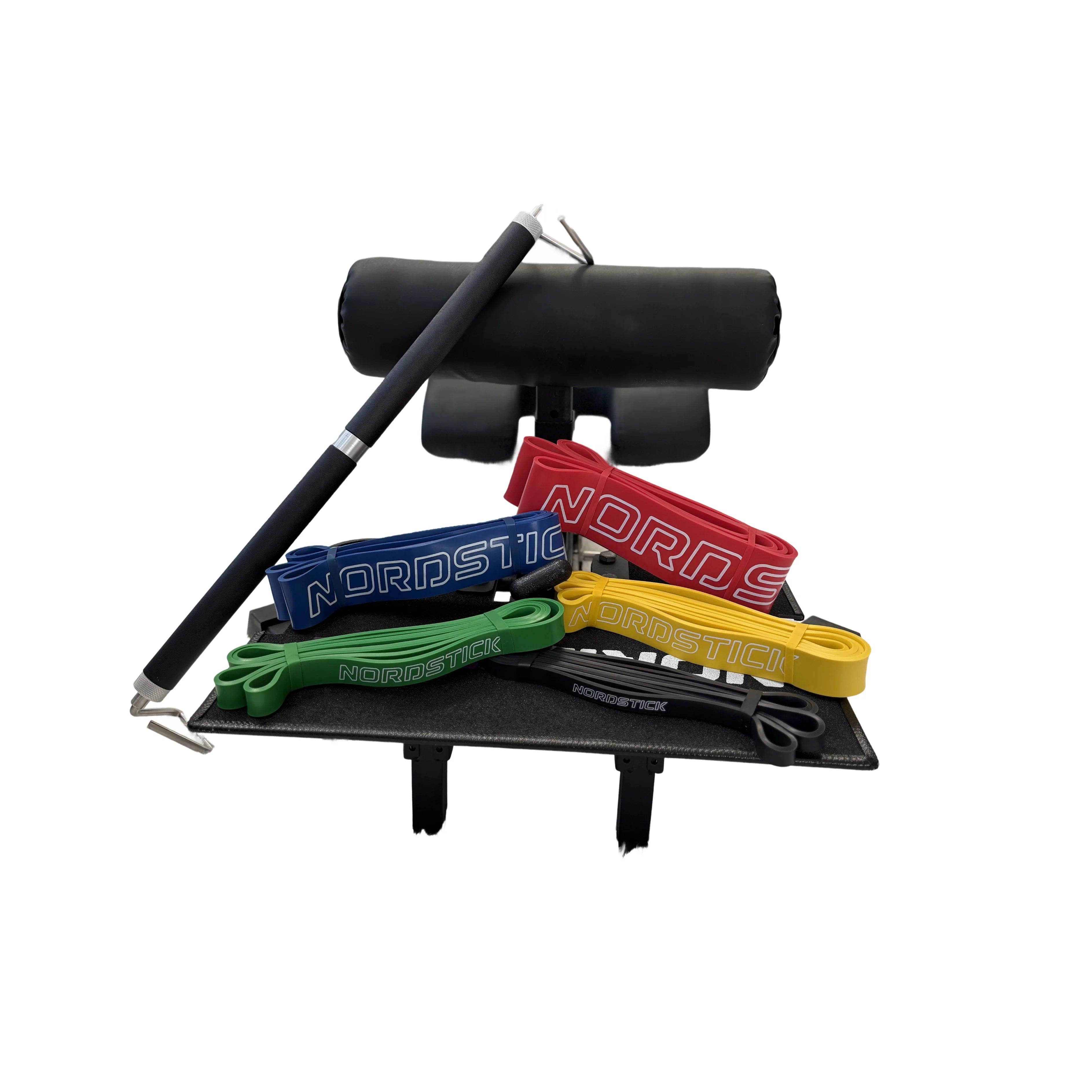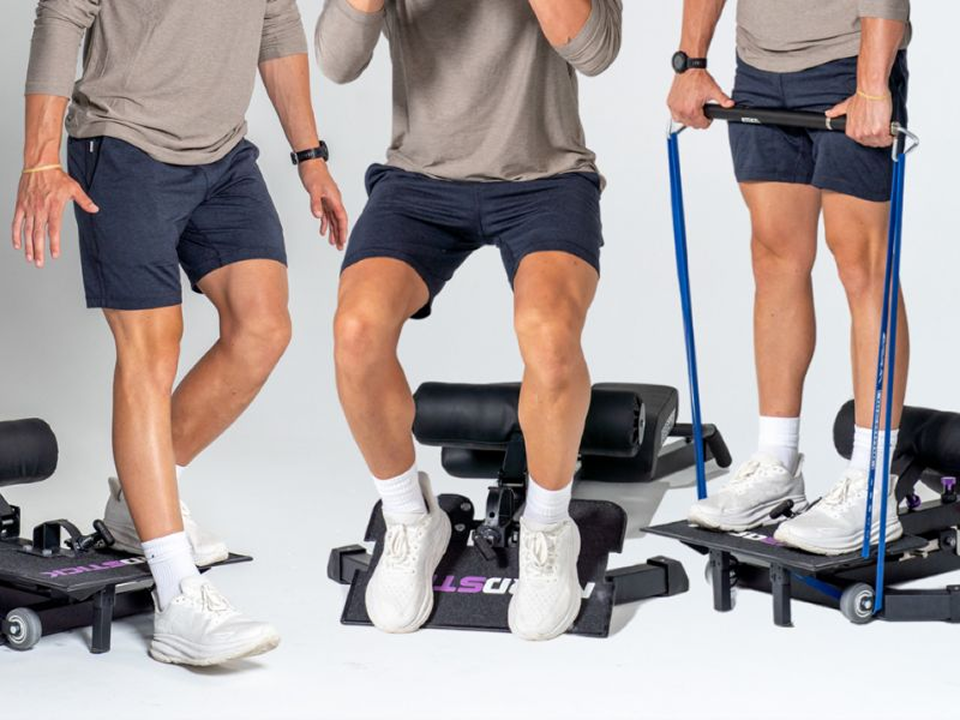Are you looking to enhance your quad strength and overall leg performance? It's time to start incorporating reverse Nordics into your workout routine. This effective exercise engages the quadriceps muscle group, particularly targeting the rectus femoris, and is known for its ability to build strength and reduce injury risk.
In this guide, we will break down how to set up, perform, and program The reverse Nordic curl, ensuring you can confidently add this powerful movement to your fitness regimen.
Key Takeaways
- Strengthen and protect your knees: Reverse Nordic curls help build quad strength while improving knee stability, making them a great exercise for injury prevention.
- Improve flexibility and mobility: This move not only builds muscle but also increases flexibility in your quads and hip flexors, enhancing overall lower body function.
- Accessible for all fitness levels: Whether you're a beginner or advanced, reverse Nordics can be easily scaled, offering benefits for anyone looking to strengthen their legs.
Get ready to unlock new levels of lower body strength with minimal equipment right from the comfort of your home.

Key Benefits of Reverse Nordics
Reverse Nordics are an awesome exercise for boosting your quad strength and lower body flexibility. They're all about targeting the quadriceps, especially the rectus femoris.
By working these specific muscles, you'll notice your muscles getting bigger and stronger over time. Plus, they help stabilize your knees, which is important to avoid injuries.
Another great thing about reverse Nordics is that they're pretty safe to do, and you don't need much equipment, so you can easily fit them into your at-home workouts. The exercise includes an eccentric phase, which helps build strength and muscle growth.
And because you do them with a neutral hip position, your hip flexors get a great workout alongside your quads. This makes reverse Nordics perfect for anyone aiming to take their leg performance to the next level.
Understanding the Basic Anatomy and Function of the Quads

The quadriceps femoris, commonly known as the quads, is a powerful muscle group located in the front of the thigh. It consists of four major muscles: the rectus femoris, vastus lateralis, vastus medialis, and vastus intermedius. Each plays a critical role in knee extension and overall leg movement.
The rectus femoris is unique because it crosses both the hip and knee joints, making it a biarticular muscle. This facilitates both hip flexion and knee extension, contributing to the muscle's multifunctionality.
The vastus muscles primarily focus on extending the knee joint. Together, these muscles work in harmony to stabilize the knee and enable various activities, from walking to running and jumping.
Understanding the anatomy and function of the quads is crucial for optimizing quad strength and ensuring effective muscle activation during exercises like reverse Nordics and seated leg extensions. This knowledge supports injury prevention and enhances athletic performance.
Performance Goals
Strength and injury prevention
Enhancing quad strength through exercises like reverse Nordic curls is crucial for both performance and injury prevention.
Strengthening the quadriceps muscle group, especially the rectus femoris, reduces the risk of knee injuries by stabilizing the knee joint. This is particularly important in activities that involve sudden changes in direction or high-impact movements.
The reverse Nordic curl, focusing on muscle activation and eccentric training, offers a conservative progression path for building strength. By maintaining a full range of motion and ensuring controlled movements, it minimizes the risk of knee pain and other injuries.
Additionally, incorporating compound exercises like leg presses or hack squats can complement reverse Nordics, promoting balanced development of the lower body. This balanced approach not only helps in achieving strength and hypertrophy but also supports the architecture of the rectus femoris.
Ultimately, a strong and well-conditioned quadriceps group enhances athletic performance while safeguarding against common leg injuries.

Setup Essentials
Equipment and starting position
Performing The reverse Nordic curl requires minimal equipment, making it an ideal exercise for home workouts.
You'll need a padded surface, like a NordPad, to protect your knees during the movement. Optionally, a weight plate or resistance band can be used to gradually increase the difficulty as your strength improves.
Begin by kneeling on the NordPad with your feet flat against the floor. Ensure that your body forms a straight line from your head to your knees, maintaining a neutral hip position. This alignment is crucial for effective muscle activation.
Engage your core to stabilize your upper body. Your arms can be placed at your sides or crossed over your chest to focus the effort on your quads. Maintaining hip flexion ensures that the hip flexors work in tandem with the quadriceps during the exercise. Starting in this controlled position sets the foundation for maximizing the benefits of performing reverse Nordics.

How to Perform Reverse Nordics
To perform The reverse Nordic curl, follow these straightforward steps. Start from the kneeling position with your feet flat on the ground and your body aligned in a straight line. This position engages the hip flexors and ensures proper alignment.
Slowly lean back, hinging at your knees while keeping your core tight. Your aim is to lower your body as far as your range of motion allows without losing form. It's important to maintain a straight line from your knees to your shoulders throughout the movement.
As you descend, you should feel a stretch in the quadriceps muscle group. Once you've reached a comfortable depth, engage your quads and core to return to the starting position. This ascending phase is crucial for the activation of the rectus femoris.
Perform the reverse Nordic with control to maximize muscle engagement and minimize injury risk. Aim for three sets of 8-12 repetitions, adjusting as needed.

Image from WorkoutPrograms.com
Training Recommendations
Basic programming
When incorporating the reverse Nordic curl into your training routine, start with a conservative progression to ensure safety and effectiveness. Perform reverse Nordics twice a week, allowing adequate recovery time between sessions.
Each session can include 3 sets of 8-12 repetitions, focusing on form and control. As you build strength and confidence, consider integrating reverse Nordics into a larger scheme of compound movements like leg presses and hack squats. This combination enhances your overall leg performance and strength.
To avoid muscle fatigue and knee pain, ensure that hip flexion is maintained throughout the exercise. Additionally, balance your program with exercises targeting other muscle groups, such as seated leg extensions or Nordic hamstring curls, to prevent overuse injuries.
Safety Tips
Precautions and exercise alternatives
While reverse Nordics are an effective exercise, there are precautions to consider to ensure safety. Start with a proper warm-up to prepare the quadriceps and knee joints for the movement.
Pay attention to your body's feedback, especially if you experience knee pain. In such cases, reduce the range of motion or consider alternative exercises such as seated leg extensions or leg presses, which also target the quadriceps muscle group while being less demanding on the knees.
For those with existing knee injuries, consult a healthcare professional before attempting reverse nordics. Additionally, maintaining a neutral hip position during the exercise is crucial to prevent strain on the hip joint.
If you're looking for other exercises that mimic the benefits of The reverse Nordic curl, consider Nordic hamstring curls or hack squats, which offer a similar training stimulus with a focus on different muscle architecture. These alternatives provide viable options for varying your workout while ensuring injury prevention.

Quick Summary
Recap and next steps
Incorporating The reverse Nordic curl into your fitness routine is an excellent way to enhance quad strength and support injury prevention. This effective exercise targets the quadriceps muscle group, particularly the rectus femoris, through controlled movement and a focus on eccentric training.
Starting with a proper setup and understanding the basic anatomy involved, you can ensure optimal muscle activation and safety. With consistent practice, including a mix of reverse nordics and complementary exercises like seated leg extensions and leg presses, you can build a well-rounded lower-body workout.
As you progress, monitor your form and adjust the intensity by using external loads or increasing repetition volumes. The next steps include integrating these movements into your regular training schedule and possibly exploring other compound exercises that enhance overall leg performance.
With patience and attention to detail, you can achieve significant improvements in strength, flexibility, and injury resilience.

FAQs
What are reverse Nordics good for?
Reverse Nordics are beneficial for building quad strength and enhancing the flexibility of the hip flexors. By specifically targeting the quadriceps muscle group, this exercise aids in rectus femoris activation, which is crucial for movements involving knee extension and hip flexion.
One of the key advantages of reverse Nordics is their ability to promote knee joint stability, reduce the likelihood of knee injuries, and support overall injury prevention. Furthermore, The reverse Nordic curl is excellent for improving the range of motion in the lower body, making them a valuable addition to a comprehensive fitness regimen.
Their adaptability allows them to be performed with minimal equipment, making them accessible for home workouts. They are particularly effective for those seeking to balance strength and hypertrophy while ensuring a safe and controlled exercise environment. Overall, The reverse Nordic curl serves as a versatile exercise to enhance your leg performance and functional mobility.
Are reverse Nordics better than squats?
Reverse Nordics and squats each offer unique benefits, and their effectiveness depends on your fitness goals.
The reverse Nordic curl specifically targets the quadriceps, especially the rectus femoris, and focuses on improving knee joint stability and flexibility. They are excellent for isolating the quads without engaging the glutes or hamstrings extensively, which is beneficial for those looking to enhance quad strength and range of motion.
On the other hand, squats are a compound exercise that engages multiple muscle groups, including the quads, glutes, and hamstrings, providing a more comprehensive lower body workout. This makes squats ideal for building overall leg strength and functional fitness. While neither exercise is inherently better, they serve different purposes.
Incorporating both reverse Nordics and squats into your training routine can provide a balanced approach, offering the benefits of targeted muscle activation from reverse Nordics and the broader engagement of multiple muscle groups from squats.
Do reverse Nordics strengthen hip flexors?
Reverse Nordics primarily focus on strengthening the quadriceps, particularly the rectus femoris, while also engaging the hip flexors. The exercise involves maintaining a neutral hip position and controlled hip flexion, which helps activate the hip flexor muscles.
This engagement is crucial since the rectus femoris acts as a biarticular muscle, crossing both the hip and knee joints. By maintaining hip flexion during the movement, reverse Nordics contribute to the functional strength of the hip flexors.
However, while they do offer some benefits for hip flexor activation, the reverse Nordic curl are not as targeted as exercises specifically designed for hip flexor strengthening, such as leg raises or seated leg extensions.
To comprehensively strengthen your hip flexors, consider incorporating various exercises into your routine. This balanced approach ensures effective muscle development and supports overall leg performance, making the reverse Nordic curl a valuable component of a well-rounded workout regimen.
What is the difference between reverse Nordics and leg extension?
Reverse Nordics and leg extensions both target the quadriceps, but they do so in different ways.
The reverse Nordic curl is a bodyweight exercise that emphasizes eccentric training, where the focus is on slowly lowering your body to activate the quadriceps muscle group, particularly the rectus femoris. This movement improves quad strength, knee joint stability, and flexibility. During reverse Nordics, the hip flexors are also engaged due to the requirement to maintain a neutral hip position and hip flexion.
In contrast, leg extensions are typically performed using a machine (seated leg extension), allowing for isolated quadriceps activation. This exercise involves extending the knee against resistance, targeting the quads without significant hip involvement. Leg extensions are excellent for isolating the quadriceps, offering a controlled environment to build muscle strength and size, and you can easily do it at home with the OmniStrap.
Incorporating both exercises into your fitness routine can provide a comprehensive approach to quadriceps development, balancing the benefits of compound movements and isolated exercises.









































Leave a comment
This site is protected by hCaptcha and the hCaptcha Privacy Policy and Terms of Service apply.